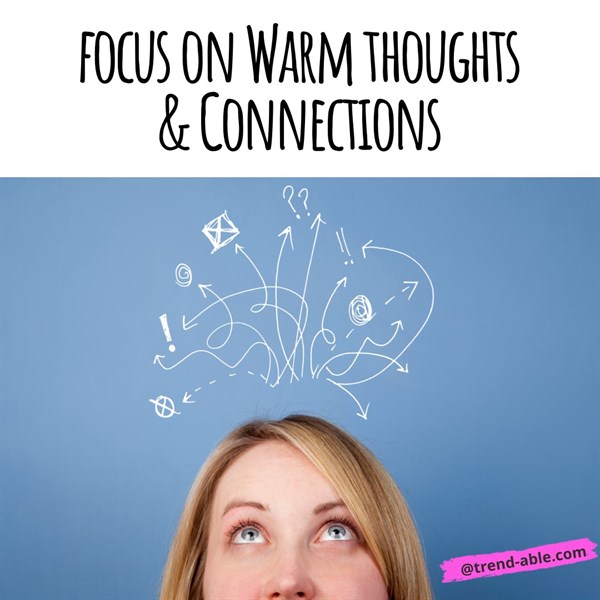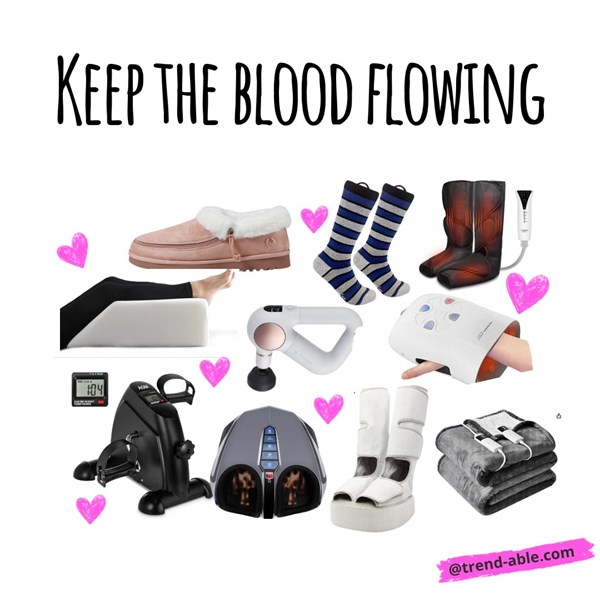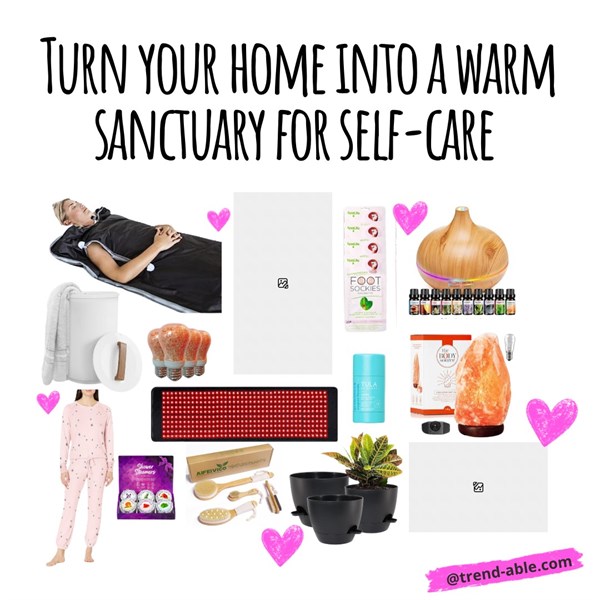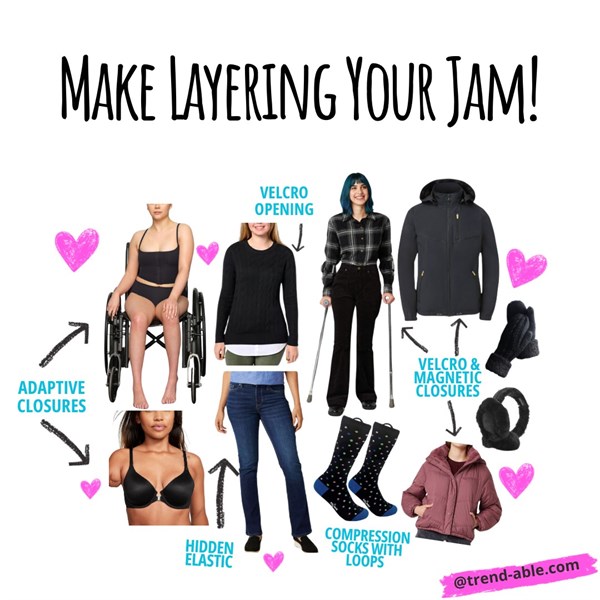Note, this post may include affiliate links that may offer a small commission when used. This does not affect the cost in any way but it does help me to offset my website expenses and splurge on an occasional Starbucks skinny vanilla latte now and then 
Breaking News Alert: Neuropathy and cold weather are not friends!
I live in Michigan, and the winters are really cold. Yep, I know, shocking, right? But, once temps drop below 40 degrees, it’s all we Midwesterners ever seem to talk about—or rather, complain about. – It’s practically our favorite winter sport!
While many people dislike cold weather, for those of us grappling with chronic conditions and disabilities, the cold isn’t just an inconvenience, it can be a pain-filled challenge.
December to early March is all about layering up, thawing out, and making it through.
Full disclosure, nowadays I’m fortunate to be able to escape the icy grip of Michigan as a Florida snowbird. But, having survived 50 winters with Charcot-Marie-Tooth Disease, I’m more than qualified to share some of the tricks and tips I’ve learned for staying warm and pain-free all winter long.
So, if jetting off to a tropical paradise for the winter isn’t in the cards for you this year, the following tips will help prevent those chills from multiplying (Grease song reference intended 
1. KEEP THE BLOOD FLOWING
If you’re on the couch binge-watching The Crown (OMG, it was sooo good!), you can keep the blood flowing and improve your circulation at the same time.
There are several awesome feet, legs, and hand massagers and warming devices that can help with numbness, pain, and that dreadful “pins and needles” feeling from neuropathy. When you’re not using one of these cool warming devices, be sure to keep your legs elevated.
Of course, occasionally you’ll need to get up to go to the bathroom. A great pair of AFO-friendly slippers with traction can help keep those tootsies warm and prevent you from falling—a definite win-win!
We all know that compression socks help with circulation but getting them on and off can be a pain in the a#$! We found super soft ones with finger loops!
Of course one of the best ways to keep the blood flowing is to be as active as possible. If you’re stuck in front of a computer all day, an ‘under the desk’ (or kitchen table) pedal exerciser is an awesome and inexpensive way to work on your circulation and even build muscles.
Whether it’s quick bursts of exercise (eg. Dancing, yoga, climbing stairs, or even vacuuming) during commercials, staying active can help combat the winter chill and alleviate some discomforts associated with certain disabilities.
Oh and when you do have to leave your house, make your car journey more comfortable by adding heated seat cushions if your vehicle lacks built-in heated seats. This simple addition can make a significant difference, especially for those with conditions exacerbated by the cold.
Slide through and click on the images below to shop products to help keep the blood flowing:
2. TURN YOUR HOME INTO A WARM SANCTUARY FOR SELF-CARE
When it’s freezing outside, there is nothing better than being snuggled up on your couch wearing a cute pair of soft pajamas. Add a mug of yummy hot chocolate, a soft electric blanket, and a few juicy Netflix originals, and you’re all set for a lazy winter afternoon.
But, when it’s too cold to leave the house and a few lazy afternoons turn into lazy weeks and even months, laying around the house can get old and the winter blues may set in.
Adding warm and relaxing elements to your home that promote and prioritize self-care routines can be a huge mood booster and life enhancer, especially for people with disabilities.
Red Light Therapy Devices & Ambient Lighting:
For individuals sensitive to bright or harsh lighting, swap out harsh bulbs for warm, dimmable lighting in order to create a soothing ambiance and reduce sensory discomfort. Consider Himalayan salt lamps for better sleep, mood enhancement and increased energy levels. Throw in a few Fairy lights and Flameless candles for that extra touch of magic.
Red light therapy is suggested to stimulate the production of serotonin, a neurotransmitter associated with mood. It may help alleviate symptoms of seasonal affective disorder (SAD) that often occur during winter. Red light can also help with chronic pain by reducing inflammation and enhancing circulation.
Portable Saunas:
The heat generated by portable saunas and sauna mats can promote muscle relaxation, potentially easing tension and discomfort associated with certain disabilities. Regular sauna use may also enhance joint flexibility and reduce stiffness, contributing to improved mobility for individuals with mobility challenges.
Cozy Textiles:
Invest in plush blankets, faux fur throws, and soft cushions to create a warm and inviting atmosphere. Brands like UGG or Barefoot Dreams offer yummy soft, luxurious options.
Essential Oils & Baths:
Use an essential oil diffuser to fill your space with calming scents. Lavender, chamomile, and eucalyptus oils can enhance relaxation.
Taking a warm bath can also help alleviate stress and lift spirits during the winter months. Treat yourself to pampering products like bath bombs/shower steamers, scented candles, and disability friendly facial masks.
Indoor Plants:
Bring nature indoors with low-maintenance houseplants via self-watering pots. Snake plants and peace lilies not only add a touch of greenery but also contribute to improved air quality.
By incorporating these elements into your home, you can turn the winter months into a rejuvenating and comforting sanctuary that helps ward off those seasonal blues.
Slide through and click on the images below to shop products to turn your home into a warm, self-care sanctuary
3. MAKE LAYERING YOUR JAM!
Look and feel hot all winter long by embracing the art of layering which helps to trap warmth close to the body.
Start with soft and easy-to-put-on accessible undergarments, then add comfortable clothing layers like a soft basic t-shirt, a flannel shirt with magnetic buttons and an adaptive sweater and finish with a disability-friendly jacket designed with extra insulation and easy accessibility to ensure both warmth and convenience.
Of course, every cold-weather fashionista needs some fun winter accessories like a great hat, shearling earmuffs, and a pair of easy-to-put-on gloves.
The right winter boots with great traction on icy surfaces can be a game-changer when it comes to winter weather survival! Pair them with shearling-lined disability-friendly winter boots or opt for awesome easy to put on short ones with excellent traction. Check out all of our favorite AFO friendly boots here. Also, get your 80’s “Get Physical” on by embracing fun leg warmers. They can not only accommodate AFOs but also add a touch of style over jeans or dresses.
On the coldest days, warm up with hand and foot warmers tucked into your boots and mittens.
Slide through and click on the images below to shop our favorite winter layers and AFO friendly boots:
4. WARM THOUGHTS & CONNECTIONS

Lastly, surround yourself with warmth in terms of both relationships and positive thoughts. Stay connected with loved ones, share your experiences, and seek support when needed. A warm and supportive community can make a significant difference in navigating the challenges of winter with disabilities.
By combining practical solutions with a touch of personal flair, you can transform the winter season into a time of comfort and joy, even in the face of neuropathy and other disabilities.
So, what’s your secret to staying fabulous and feeling your best during winter with an invisible disability? Share your tips in the comments below!
So, fellow winter warriors, gear up, get cozy! Let’s conquer the cold together!
Xo
Lainie









Thank you for sharing. It is very helpful and interesting.